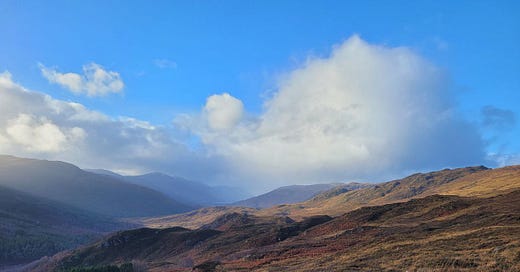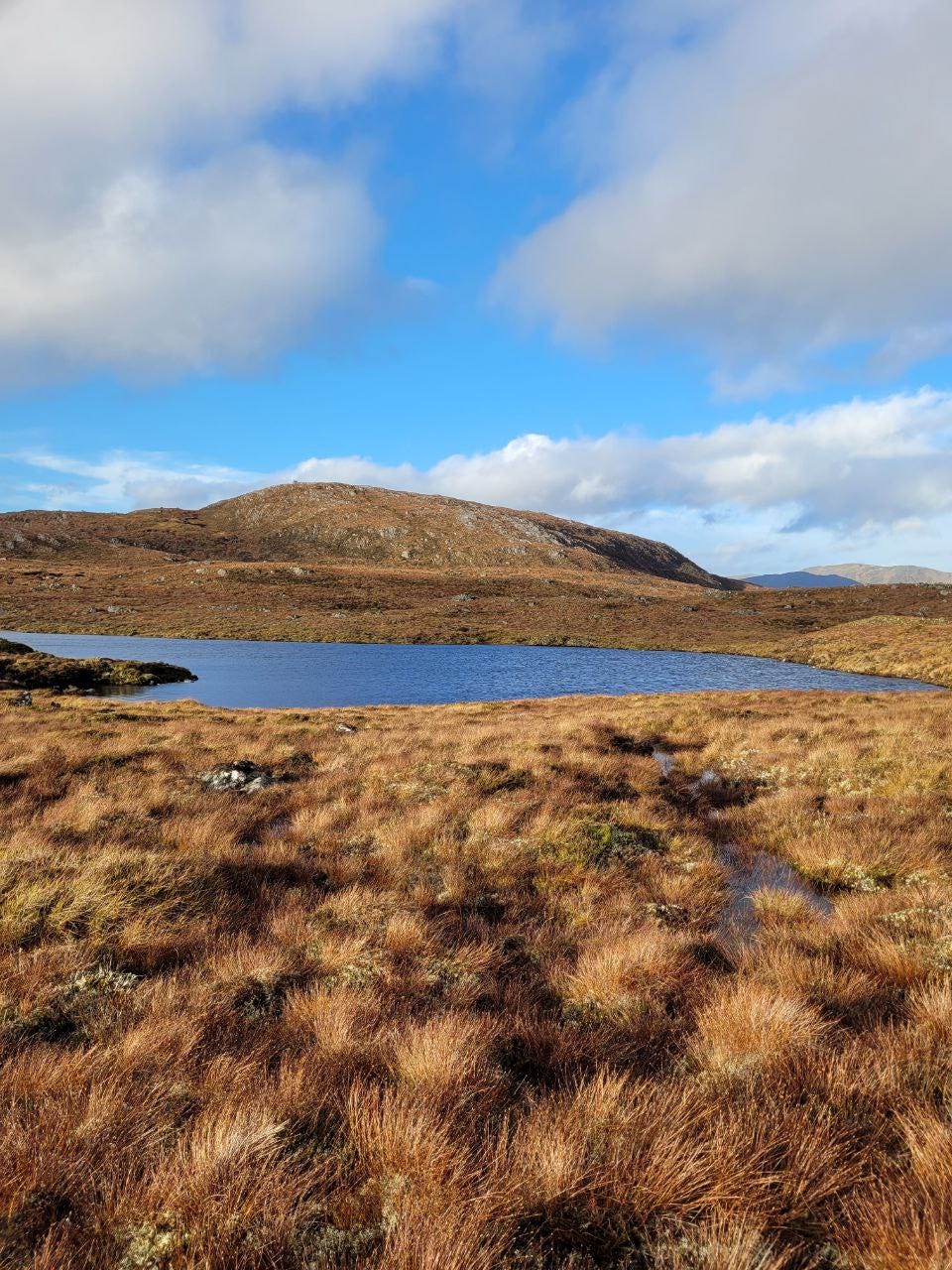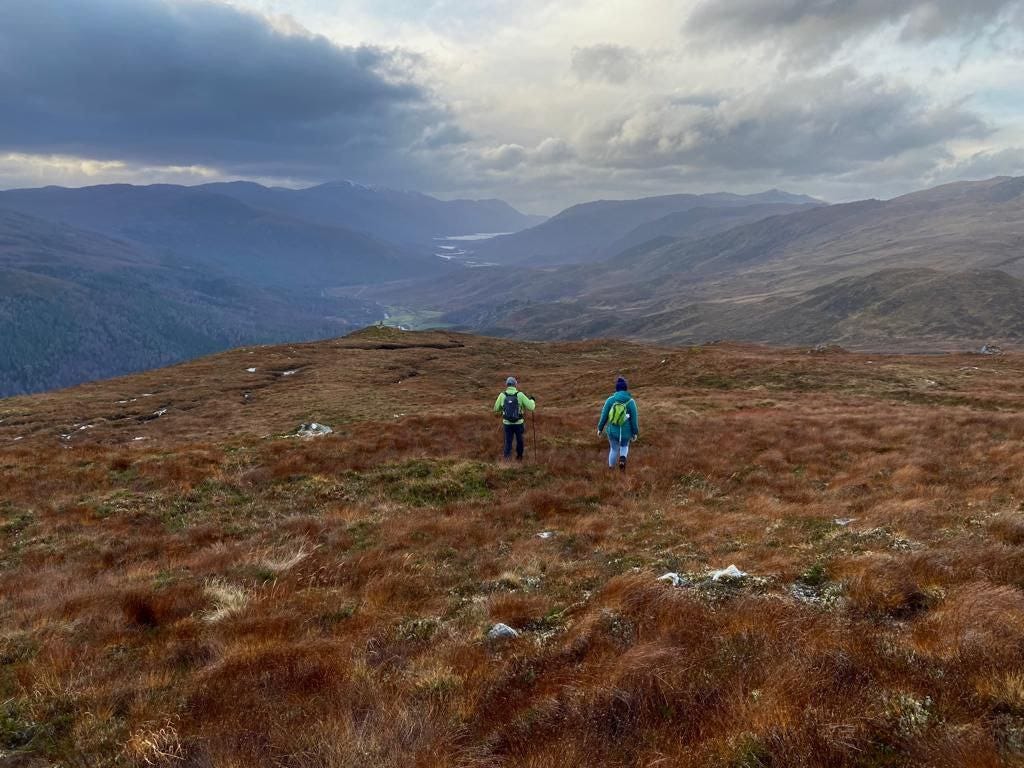If you have ever been unfortunate enough to be cornered in a rural Scottish pub on a misty afternoon by a beardy mountaineering type, then you may have heard of Corbetts and Munros. For the fortunate among you, Munros are big Scottish hills, Corbetts are slightly smaller Scottish hills. If your immediate thought was – No! It’s much more complicated than that! – then you are part of the problem. For there is a subculture of people, our aforementioned beardy mountaineering friend, who number, climb, and tick off these hills in a practice legitimately known as Munro Bagging. I shit you not.
Inside this subculture, is a sadder, weirder subculture of people who climb smaller, sadder, weirder hills. A Russian doll of hobbies with foot blisters. Within this subculture you will find my father and his obsessive hill climbing tendencies. Some of these hills are called Grahams. I don’t know why, I swear someone explained it to me once, but I can’t remember, and I won’t bore you.
And this, in short, was how I found myself in the car, in the rain, being shown photos of a bracken-y knoll that was to be our adventure of the day. This kind of escapade has been such a mainstay of my entire childhood that I am now totally numb to any reasonable sense of foreboding.
As is often the case with these shenanigans, small knoll turned out to be very far away from our starting point, and embarking on our quest to nowhere I became preoccupied with one pertinent and overpowering question: what do you call undergrowth when it’s armpit high? Surely not undergrowth, it’s not growing under anything. It’s growing over me.
The going was tough, when all you can see is bracken at eye level, the churned-up divots of rocky mulch underfoot have to be felt out with the toes. It becomes an invisible minefield of ankle-breakers. Twenty minutes in my feet were wet, my knees scraped, and my patience wearing thin.
The pace is too fast, and I am not very well. The air seems to crystalise sharply in my lungs, crunching and scraping every time I inhale. My spine is trying to distance itself from the whole affair by crawling straight out of my back. My ribcage is full of fishing wire, and I have lost all feeling in my hands. We press on.
As the undergrowth makes way for heather and exposed rock face, we step into the onslaught of the wind buffeting over the top of the ridge. Hoods go up and gloves go on. We walk at an angle pressing our backs into the wind, contorting to keep our eyes on the summit and our noses out of the cold.
I cannot describe to you the extent to which this is my parent’s happy place. Lesser writers than me might try and make some kind of generational analysis of post-war babies who believe that suffering is an integral part of life, and in fact the key to true enjoyment. I would not stoop so low. I can only say that this is not my happy place, I have honed the fine art of accepting the miserable. I try to settle in to the now reassuring feeling of one side of my face being comprehensibly sand blasted by the elements and think familiar backward thoughts about how much more I will enjoy the hot chocolate at the end of all this. But this time it stalls, gets stuck somewhere shy of its protective bubble.
I can’t do this. The pain is rising and swelling, and I feel like I’m drowning on dry land. I can no longer keep the ground in focus, and I shuffle forward, afraid I’m going to miss something and pitch headlong into the waterlogged peat. After a brief tete a tete it is decided that they will carry on to the summit without me, appearing to me in that moment as they disappear over the horizon like the egomaniacs in an Everest documentary. They return to find me exactly where I was, trying to keep my eyes open, swaying gently in the wind.
Heading back was easier as I wasn’t so out of breath. The pain gets worse, pressing sharp and hot into my shoulder blades and neck, and wrapped round me like tight bandages, digging in. I am quiet and I get back to the car safe and sound. I cannot keep my eyes open and fall asleep as soon as I sit down.
For a long time this story didn’t have a happy ending. I sat at home staring blankly at the flashing cursor icon slowly boring a hole in the middle of my forehead. There was nothing more to say, I was in pain every day, a pain that stopped me from exploring and adventuring and going and doing and all the things that made my soul sing. Doctor’s appointments went nowhere, I was prescribed drugs that didn’t work, and was told to ‘stop thinking about’ being in pain.
And then, on a wet Monday morning I attended the Long Covid Clinic at UCLH. I was listened to and understood. I was told to go more gently with myself, and with the right types of slow and careful exercise I could be back to my normal self within six months. I almost cried in the doctor’s office. What felt like an eternity of worry about being stuck like this forever slid off my shoulders. So here there is a gentle hope. A hope that one day I will be able to be miserable on a mountainside again on my own terms.
Find out more about Grahams because you have literally nothing else to do






